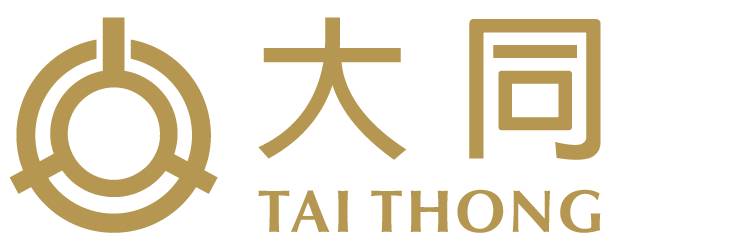Usage: Mooncakes such as these black sesame mooncakes are typically served as desserts after dinner while watching the moon with family or friends during the Mid-Autumn Festival. The Mid-Autumn Festival, like any other holiday, is usually celebrated with as many friends and family as possible to further benefit from the prosperity of the joined gathering. To begin, take your mooncake packet/box, unwrap it, and remove the mooncake. You can then eat the lotus-paste-filled pastry in a variety of ways: If you have a more refined palate, consider using a knife and fork. You can cut it into quarters or larger pieces and eat it with a fork. Or, chopsticks can be used for a more Asian feel. It is typically sliced into bite-size pieces for friends and generally older family members to enjoy. Of course, you can eat the black sesame mooncakes with your hands and enjoy them without using any utensils. Although, given the calorie count, you may want to double-check that you have enough folks to split your sweet mooncakes as it can end up becoming too hearty for one person. Mooncakes are typically served alongside Chinese tea. If you want something a little stronger than tea, a glass of wine can always be a welcome addition to the table.
Certifications: All of Tai Thong Mooncake’s' byproducts, including the Kuroguma mooncake, have been subjected to rigorous inspections and examinations, and have been awarded the following awards and certificates in exchange for the establishment's exceptional example in both service and goods:
Storage: Traditional mooncakes, such as the salty, black sesame mooncake that have not been sealed, should be stored in an airtight container in a cold and dry place, away from sources of direct sunlight and moisture. Prior to opening, however, mooncakes can be stored regularly in a pantry on your countertop, so long as it is sufficiently covered.
A mooncake or also known as Benni or Benne is a typical Chinese baked treat consumed during the Mid-Autumn Festival and is considered a delicacy during the festival of lunar appreciation and Moon viewing. During the holiday, mooncakes such as the black sesame mooncake are distributed among friends or during family gatherings as part of the autumn indulgence. Furthermore, the Mid-Autumn Festival is commonly considered to be one of China's four most important festivals. Mooncakes of various flavours namely the red bean paste mooncake and black sesame mooncake, are typically eaten in little wedges with tea. In today’s time, it is customary for businesspeople and families to give them as gifts to clients or relatives, fueling demand for high-end mooncake-based baked goods. Most bennes are made with a thick, tender pastry skin encasing a sweet, rich filling and may have one or more whole salted egg yolks in the center to represent the full moon. Mooncakes can also be steamed or fried, depending on the tradition.
Traditional mooncakes as the earthy black sesame mooncake include a top imprint on the lotus pastry with Chinese characters for longevity or harmony, as well as the bakery's name and the filling inside. Imprints of the Moon, the Chinese goddess of the Moon, flowers, vines, or a rabbit may be used atop the skin to decorate the characters. Mooncakes are loved in different regions of Asia, much as the Mid-Autumn Festival is celebrated in other Asian locales due to the presence of Chinese people throughout the region. On the other hand, both the crusts and the fillings of mooncakes have evolved over time, owing to a commercial imperative to increase sales in the face of fierce competition from other food varieties and producers. Part of the reason for these developments is to accommodate changing taste preferences and because people are becoming more health-conscious. As a result, the majority of these current styles are notably popular among the cosmopolitan and younger Chinese, as well as the overseas Chinese population. Traditional mooncakes, on the other hand, are frequently sold alongside contemporary mooncakes to appeal to particular preferences.
Tai Thong began their operations in Vietnam in 2015. Inspired by the taste of more than 100-year-old Singaporean mooncakes, blended with the most advanced mooncake production technology. As a company, they have put in a lot of work in Vietnam to help Tai Thong's market position and aim to specifically continue to keep civility principles blended with the quintessence of the times, modifying just enough to fit the taste of Vietnamese clients.
Mr. Kwok Tai Ping, an immigrant from Hong Kong, first kickstarted the business by opening a modest cake business on a small street in Singapore's Chinatown community in 1910. The bakery specialised in traditional Cantonese-style pastries that were created daily using local ingredients and had been with the Lion Island nation through many ups and downs and prosperous times in history, witnessing the country's secession and independence. As a result, the humble bakery has grown into a global brand that has inspired many countries, through its delicious creations of humble mooncakes. With a variety of flavours such as snow skin yam mooncake, black sesame mooncake and pure red bean mooncake, the aim to produce both traditional and newer varieties of mooncakes are well kept within order by the company's dedicated staff.


Powered by 
© 2007 - 2025 DagangHalal.com. All Rights Reserved. Developed and maintained by DagangAsia Network Holding Sdn. Bhd. (1344481-V)
This website is best viewed using Internet Explorer 11 or above, Mozilla Firefox and Chrome.